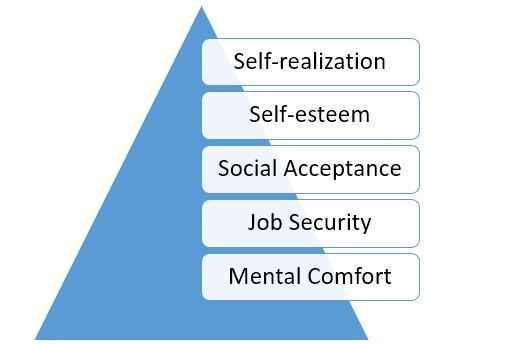In most of my presentations, I start at the very beginning by addressing the fact that for close to a decade now I have been presenting on the subject of using Lean in Sales and Marketing. Along the way, I have seen the gradual diminishing of Six Sigma influence and the rise of the Lean Startup. If that does not say enough, I think I can expand on the idea that we used to think we could manage a stricter step by step process, and now our attempts are much more encompassing and iterative with the idea of learning as we go.
I am still surprised when we introduce Lean to most specifically Sales, we introduce it as a process. We think that sales is foreign to process thinking. The truth be known is that sales have seen more processes and come and go than any other part of our organization. The problem, like any change effort, is that we have to create the reason why sales needs Lean in the first place. Even the leanest of Lean organizations treat sales as a way to even out flow in production or to rid sales of wasteful activities making them more effective and efficient.
I think the problem exist not in the resistance of salespeople to Lean but the Lean people trying to force Lean onto sales. Sales have every right to resist the introduction of Lean unless it makes sense and affords them the opportunity to succeed. When I mention success, the first question I would ask how do you measure sales performance?
It is not that I am against these things or that I do not think from a systematic view of the whole, it is because even when we ask sales to accept Lean, we ask for them to be evaluated and monitored on other objectives. Just simply ask, when Lean is applied to sales does it result in greater:
Of course, we recognize this as Maslow Hierarchy of needs. Most of the time when we introduce Lean to sales folks we go against the fundamental concepts. Then we wonder, why they resist.
The point to this is that we should not be introducing Lean or any process to sales. We should be improving the sales process through standardization, experimentation and exploration. The steps are not that difficult:
- Find a problem that sales would like to improve
- Capture the current state
- Envision what might be.
- Speculate on how to improve it
- Experiment with the smallest steps that would prove we were advancing.
- Adapt as needed.
- Simplify capturing key learnings to incorporate in the normal process of work.
We would assist them by adding our help in documentation, research, analyzing and gathering specifications so that they could continue selling. This entire process can be captured and spread through the sales area through the use of a single page, maybe something about the same size of an A3. After doing this, we would ask sales, “Is there another area of concern that we could help with? What would happen instead of trying to get sales to accept Lean, we would try to adopt Lean to them?
A concept, an ideal that cannot spread itself throughout an organization by the same principles it is founded in, is not a concept worth exploring. The fundamental Lean concept of PDCA, continuous improvement is universal and an area that any part of the organization is willing to accept. Lean must evolve and develop as it has in other parts of the organization. Don’t try to make a Lean sales process. As Dr. Michael Ballle said, “Lean is not a revolution; it is solve one thing and prove one thing.”
Learn Lean Sales and Marketing thru A3s

